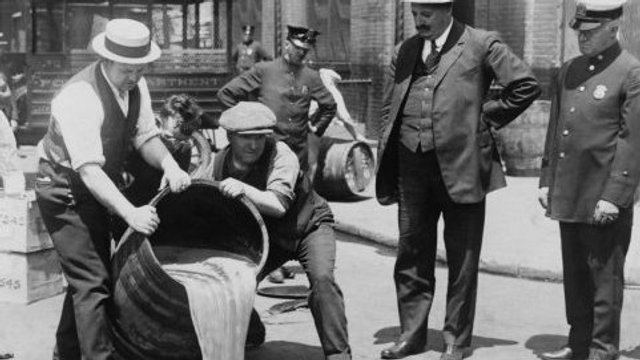
Right on the heels of California Wine Month and the beginning of grape harvest, comes Ken Burns latest documentary: Prohibition. The six hour series, which airs on PBS stations October 2nd, takes us back to an infamous thirteen year time period in our nation’s history when the commercial production and sale of alcohol was banned. For those not glued to the prohibition era TV series Boardwalk Empire, the 18th Amendment was passed in 1920 at the urging of the temperance movement.

Prohibition agents. Photo: Library of Congress
California’s wine industry, which had recently rebounded from a major pest infestation and was poised for great things, was devastated by Prohibition. Vineyards were ripped up and a majority of the more than six hundred wineries were shuttered. The few that remained open did so by producing wine for religious purposes. Beaulieu Vineyard was one of them. Founder Georges de Latour was a Catholic and a friend of the archbishop of San Francisco. Latour cut a deal to sell wine to all the priests in the diocese.
Prohibition was supposed to curb alcohol consumption, but instead the party went underground, giving rise to a thriving criminal economy run by bootleggers and gangsters. Port cities, like San Francisco, managed to stay pretty wet during those dry years, thanks to illegal liquor brought ashore in the dead of night, carried on ships from Canada. The roaring twenties saw the rise of a new breed of young women, known as “flappers,” while beer, wine and spirits—some bootlegged, some made in basement stills flowed in hundreds of backroom speakeasies.


